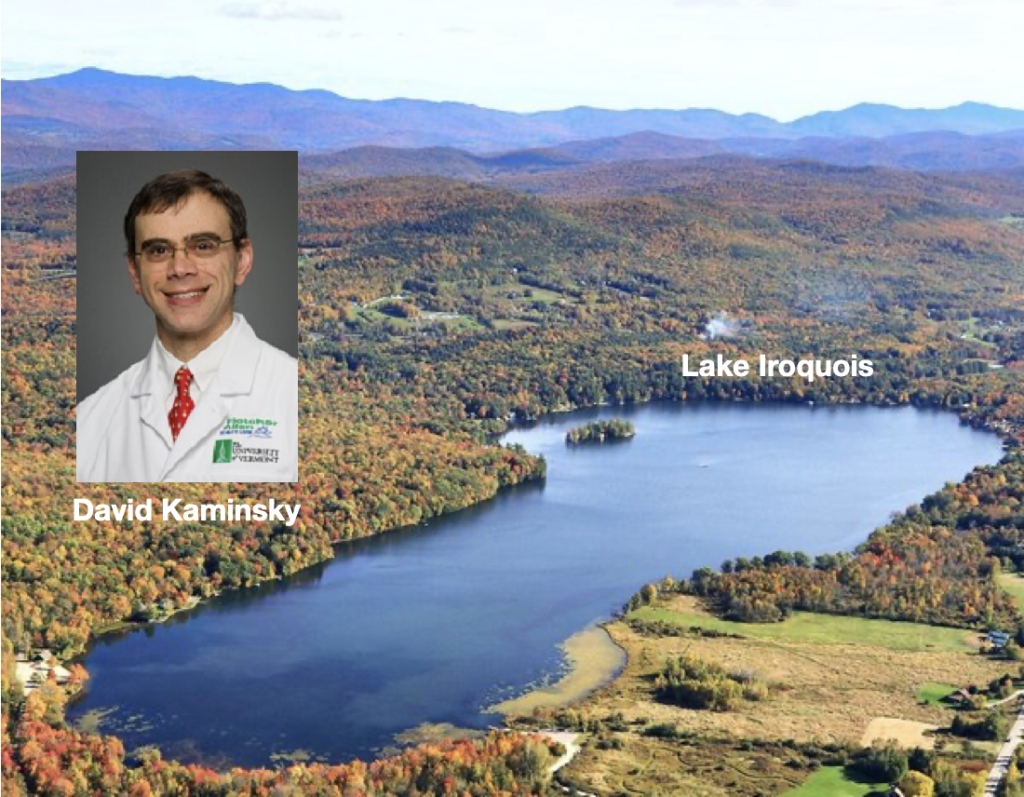
For this newsletter, we interview David Kaminsky, Professor of Medicine, Pulmonary and Critical Care Medicine at UVM, and resident on Lake Iroquois. Lake Iroquois (formerly known as Hinesburg Pond) is geologically a kettle pond located in a valley between Dow and Magee Hills on the east, and Mount Prichard on the west. It lies in the Lake Champlain watershed and is bordered by the towns of Williston, Hinesburg, Richmond, and St. George.
David has reviewed the science in the RWVL petition, and we asked him for his comments.
David, what do you think of the science that backs our proposed wakeboard rule?
As a physician-scientist at UVM College of Medicine, one of my jobs is critically reviewing scientific papers and grant applications. I have read the original petition in the same way I conduct these reviews, looking for clear writing, strong evidence, and compelling arguments. I find the original petition convincing in all these respects, including the safety zone distance of 1000 feet. Therefore, I do not agree with the modification proposed in the DEC’s concept draft rule to reduce the distance to 500 feet.
What’s the strongest support for a distance greater than that proposed in the DEC’s concept draft rule?
The data from the peer-reviewed, University of Minnesota study clearly demonstrate that a distance of greater than 500 feet for wave height, and greater than 600 feet for wave power, is required for a wakesurf boat to generate a wave similar to a non-wakesurf boat operating 200 feet from shore. Data from other cited work suggest even further distances from shore, including a recommendation of 984 ft. from a research group at the University of Quebec.
Based on the science we have so far, what do you recommend in terms of distance from shore?
Given that there are limited data on this distance, and uncertainty around those data, it only makes sense to adopt the most conservative approach by recommending 1000 feet. This is exactly what is done when safe limits are established for toxic environmental exposures in humans based on limited animal data; exposure limits are established in people that are many times higher than those observed in animals to take into account the uncertainty of what toxic exposure levels will really be in people. In the case of a safe distance to shore in the presence of wake boat activity, there is no reason to adopt 500 feet, which appears to be chosen simply because it is somewhere in the middle of current estimates.
What’s your advice to the Department of Environmental Conservation and the Agency of Natural Resources?
Since the Vermont Use of Public Waters rules must speak to the interests of both current and future generations of lake users, the DEC should take the most protective approach and adopt the 1000-foot distance to account for future growth of the sport, the expected increase in size and the number of boats (as has been seen by other lakes in the country), and potential harms to people, property, and the ecosystem at or near the shoreline. I want to thank the DEC for drafting this rule, and encourage them to increase the safety zone distance to 1000 feet.
Know a friend or neighbor who might be interested in our RWVL newsletters? Tell them to connect to http://responsiblewakes.org/#signup
